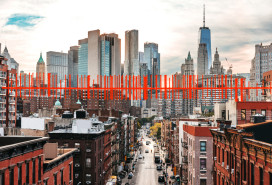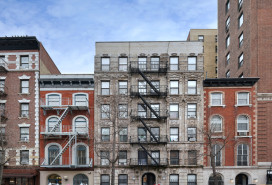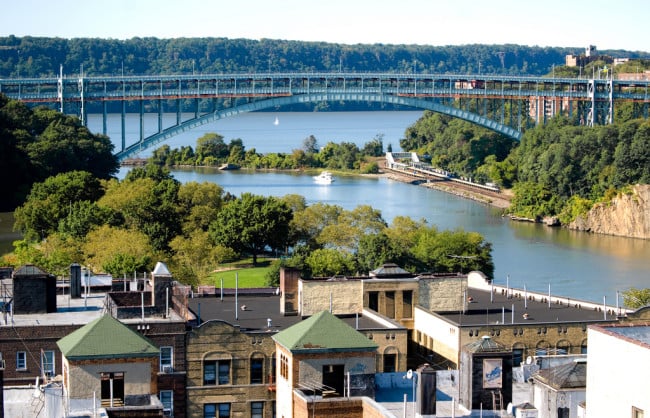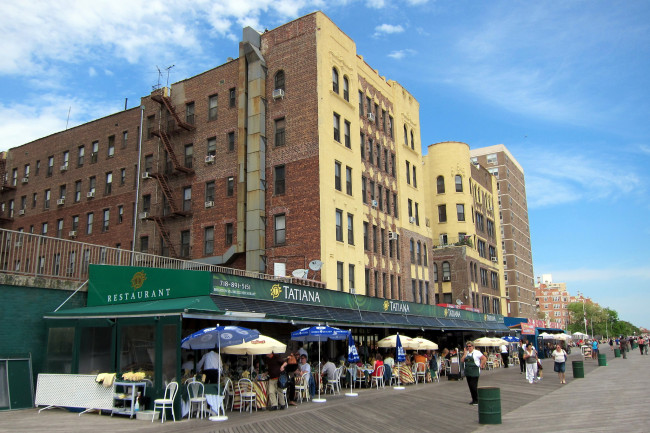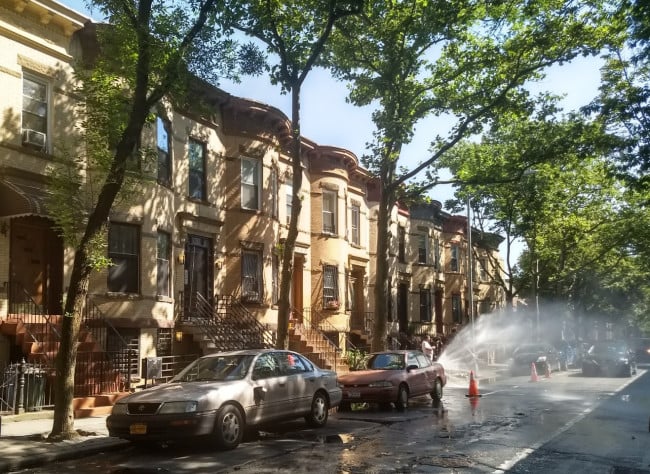The Concourse: The insider's guide to living there
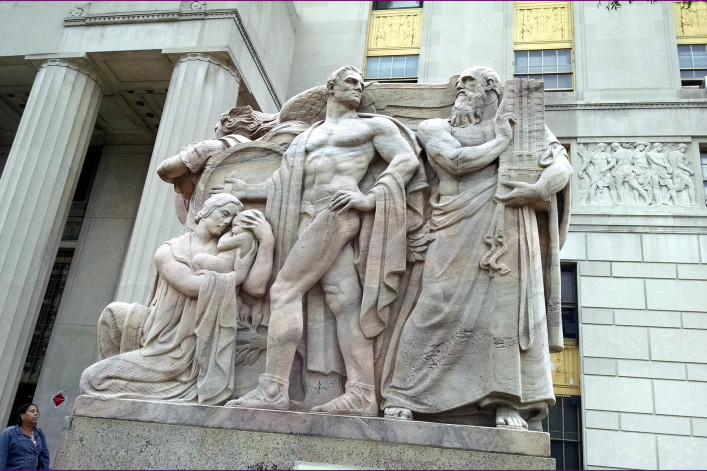
The Bronx County Courthouse on the Grand Concourse, a neoclassical structure built during the Depression.
For an insider take on the Concourse, the guy to talk to is Samuel M. Goodman, who grew up on the Grand Concourse, the stately five-mile thoroughfare that gives the area its name. He still lives and works there and leads walking tours of the area for the Bronx Museum of the Arts. He says the Concourse represents authentic New York City.
“Many say that this is the New York City that used to be New York City before corporate America bought out most of the adjoining boroughs,” Goodman says.
“Yes, we have Starbucks, but we also have places where a large cup of coffee costs less than $1. People play dominos and toddlers ride tricycles on the sidewalks. It’s a noisy place when the weather is hot, and it’s where folks say ‘happy holidays’ when it’s cold and really mean it. Yes, this is a working-class community—a place with soul and spirit,” he says.
And precisely because it is a working-class community, many of its residents are front line workers who have been disproportionately affected by the pandemic.
“The Bronx is where most of those with less reside. I have neighbors from the hotel industry who have been out of work for over a year,” Goodman says.
[Editor's note: An earlier version of this post was published in July 2018. We are presenting it again with updated information for March 2021.]
The neighborhood endured an early and tragic loss at the very beginning of the pandemic with the death of a much-beloved doorman, Juan Sanabria. He was one of the city’s first victims of the virus. Sanabria’s death made the pandemic part of “our personal story. It made us all both sad and super vigilant,” says Ariela Heilman, a broker at Brown Harris Stevens.
Thanks to its grand buildings, the neighborhood has historically had a strong pull for residents. Andrew Dolkart, professor of historic preservation at Columbia University's Graduate School of Architecture, Planning and Preservation, summed up its desirability in a New York Times article.
"My grandparents always wanted to live on the Grand Concourse. Their apartment on the Grand Concourse was smaller than their other apartment, but it had the prestige of the address," he says.
The Grand Concourse, the anchor of the neighborhood, was designed in the early 1900s by French immigrant named Louis Aloys Risse who wanted to create a NYC version of the Champs Élysées, Paris. Early on, the boulevard experienced a housing boom; Jews and Italians left their Manhattan tenements for apartments that were light and airy and had private bathrooms and central heating.
The Grand Concourse Historic District, which includes the avenue itself and small sections of adjacent side streets, extends from 153rd Street to 167th Street. At the southern, commercial end, stands the dignified Bronx County Court House and the imposing Bronx General Post Office, which ambitious developers had plans to buy in 2018 and turn it into a Chelsea Market-style collection of eateries and shops. It was to be called Bronx Post Place.
But in 2019, the Commercial Observer reports that the developers walked away from their plans to purchase the building for $70 million
Goodman says that the interior had undergone major restoration, and this included “some wonderful Ben Shahn murals.” All that remains of the original plan is a restaurant on the top floor, Zona de Cuba, which just reopened its indoor space and its lively rooftop bar.
The post office project was meant to signal a new era for the Concourse, it was going to become, according to Goodman, a “destination,” Now, who knows?
The “new” Yankee Stadium is just off the Concourse on 161st Street. Most recently it was the site of a massive vaccination hub for Bronx residents. Before the pandemic, the area around the stadium was crowded with fast food restaurants, bars and souvenir shops. What the fate of these shops will be—whether they can hang on until the baseball fans return—is also uncertain.
Goodman worries that “if things don’t open up in the next six months, we’ll have real problems.”
Most of the mom-and-pop shops that cater to the residents have stayed in business. “People still have to shop for basics so foot traffic is the same as always.”
Most of the residential part of the avenue is north of Yankee Stadium, an unbroken stretch of 61 apartment buildings built between 1917 and 1959. Twenty-seven of these were built around 1933 and in a distinct Art Deco style, making the neighborhood a magnet for architecture buffs.
The 1960s to the ’80s was a difficult time for the Concourse neighborhood—and for the rest of the Bronx. Much of the neighborhood’s housing stock fell into disrepair during those decades. It was during the 1977 World Series, taking place at Yankee Stadium, that the world caught a glimpse of the fires in what were likely derelict buildings. In the ’90s, quality of life in the Bronx turned around—often with the help of community groups—and the formerly grand avenue came back to life.
One particularly curious structure along the Grand Concourse is the Andrew Freedman Home, a massive building that looks like an Italian villa transported to the Bronx. Built by Freedman in the ’30s to house the formerly rich victims of the Depression, or, as Goodman says, “destitute millionaires,” it has been repurposed as a place for public meetings, art exhibits, artist studios, a preschool, and a bed and breakfast with rooms decorated to replicate the originals. It is closed but is scheduled to re-open this month.
As for the area’s housing market now, Heilman says that new renters are coming from the other boroughs and many who may have been planning to rent are accelerating plans to buy. Neighborhood residents aren’t “running for the exits,” she says, but many people who were planning to retire in three to five years are selling now. “If you’re committed to living in New York City, this [buying an apartment in the Concourse neighborhood] is the opportunity of a lifetime.” She adds that self-employed buyers are having a very tough time meeting the lenders’ more stringent terms these days.
Boundaries: West 152nd Street to West 170th Street, Jerome Avenue to the Grand Concourse
Median Rent: Two bedroom, $1,950
Median Purchase Price: Two bedroom, $392,000
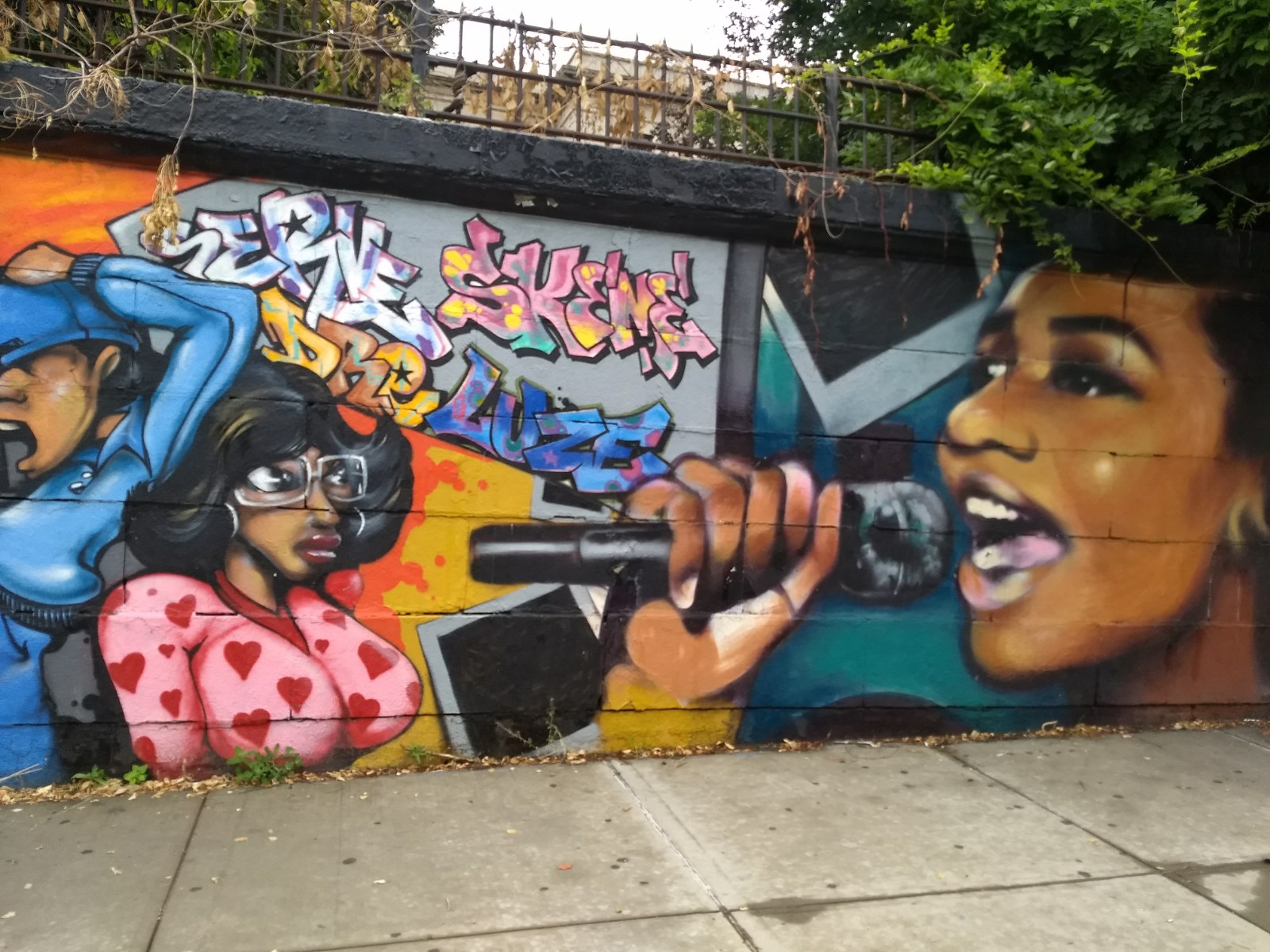
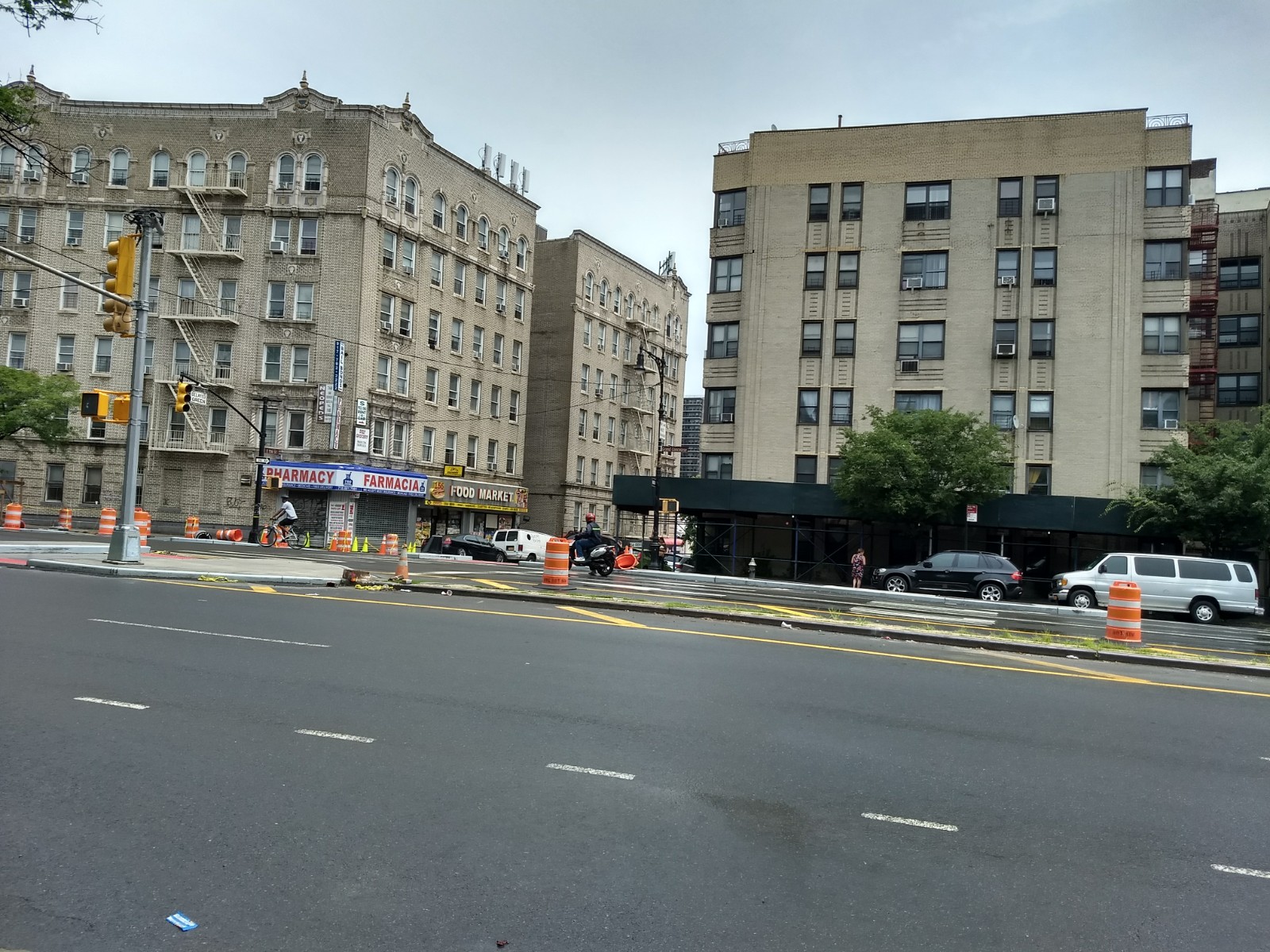
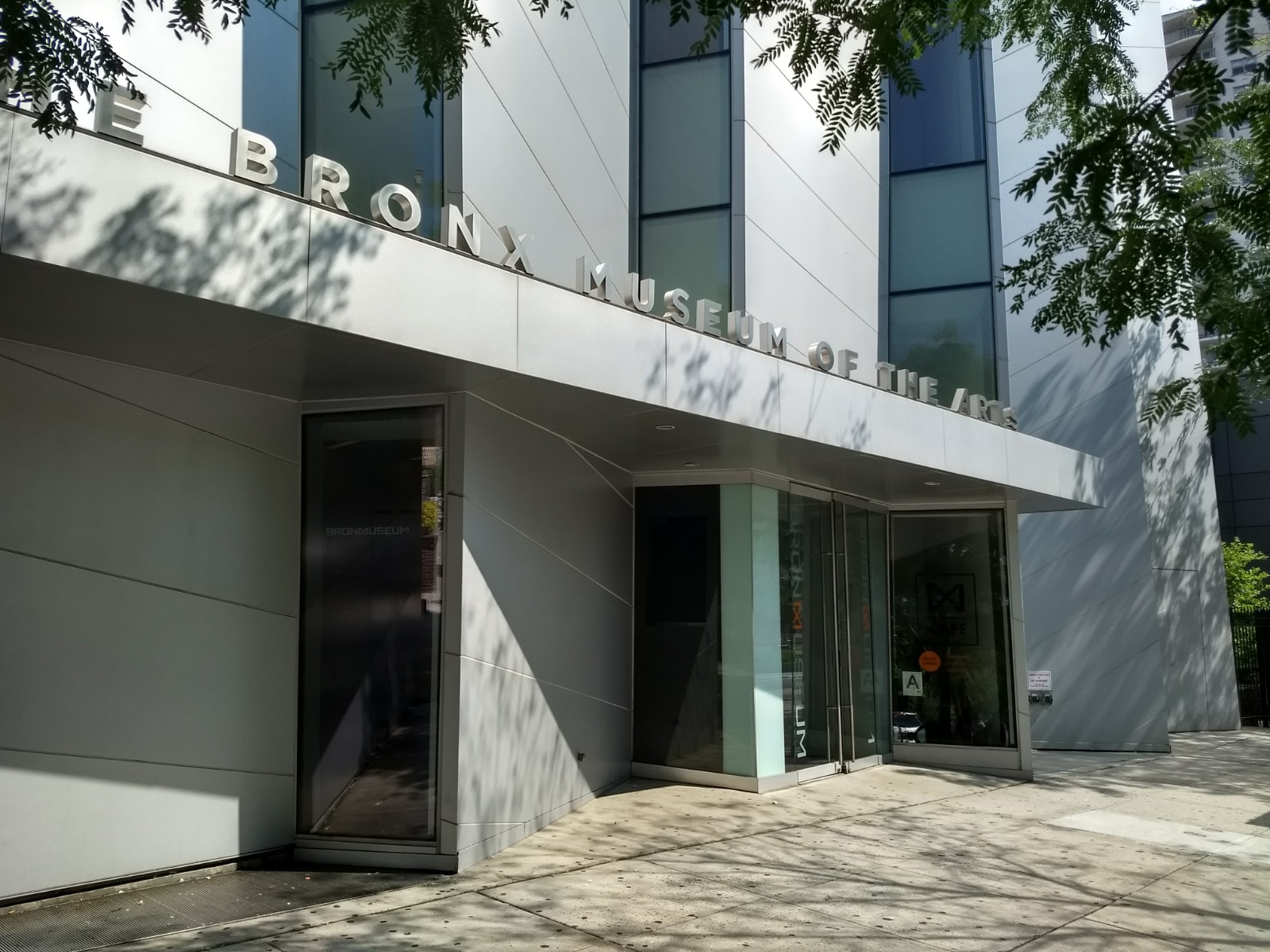
Transportation is plentiful, just not always accessible
“Our trains are crowded late at night—we have lots of late-night-shift workers in the neighborhood. We have the B, D, and 4 trains, bike paths and pedestrian access to Randall’s Island." —Heilman, owns
“Most of the Grand Concourse can claim to be within 40 minutes of Fort Lee, NJ; White Plains, NY; Stamford, CT; Citi Field in Queens; Kennedy Airport; LaGuardia; Wall Street; 42nd Street; Belmont Race Track...no other location in the five boroughs offers such easy access to all these destinations.” —Samuel M. Goodman, owns
“I drive to work in Westchester, but parking sucks when the Yankees play a home game. My commute sometimes takes an hour.” —Michael D., rents
“There are lots of subway lines, but I can’t use them. I’m disabled, and there are no elevators.” —Tania Hernandez, rents
“I take the bus in front of my house to get to school. It takes 15 minutes. I belong to Build On, a community service group, and we go to all boroughs. It’s easy to get to all of them from here. And I like to ride my bike.” —Joshua Ruffat, lives with his mother in a rental
It’s extremely diverse
“While Queens is known for its diversity, the Grand Concourse might be a close second. While Latino and African American residents make up a majority, newcomers from Brooklyn and Manhattan are diversifying the community. So are West Africans and even a small number of folks from Eastern Europe.” —Goodman
Friendly neighbors? Most think so
“People will greet you in the elevator, and when I was ill a few years back, my building’s doorman called to ask if I needed any help since he hadn’t seen me in a few days.” —Goodman
“One of the things that lower housing costs net is time! Time to be a mensch and breathe and schmooze...” —Heilman
“People my age used to look out for each other. Not now. I’ve lived here for 42 years—it’s not the neighborhood it used to be.” —Anonymous, rents
“Where I live, everyone’s cool with each other.” —Ruffat
“People are friendly, for the most part. I know the people in my building—we say ‘Hi, how are you’ but that’s about it.” —Michael D.
Not great for kids—but OK for dogs
“Back in the day we had playgrounds. Now one of them is locked up. Now the street is the playground. The kids open the hydrants when it’s hot.” —Hernandez
“The public schools aren’t competitive yet. Families who come here with kids choose where to go once they’re settled. Some send their kids to parochial schools, some choose private schools or charter schools.” —Heilman
“A good place to bring up a family? If you are not able to afford a private school option for your children, the answer is ‘not really.’ Bronx public schools in District 9 rank as very poor in performance. Charter schools are nearby and are much more successful. Those who do have children rely on All Hallows, Cardinal Hayes, or non-religious based institutions found in the area.” —Goodman
“I grew up here and went to All Hallows. It’s a boys’ school. It was fine.” —Michael D.
“I have two dogs. It’s not a bad place to have a dog, but some people don’t clean up after their dogs. See that guy over there? He’s one of those people.” —Anonymous
Lots to do within walking distance
“I can walk to the Bronx Museum of the Arts (timed tickets), the Longwood Gallery at Hostos Community College (temporarily closed), the Pregones Theater (events are on line). Hostos sponsors lots of programs for the public as well (on line for now).” —Goodman
“I come to the Concourse to shop at BJ’s. See this suitcase? I’m going to fill it up. I have arthritis though, and I wish there were an elevator here [at the 149th 2 train stop].” —Anonymous, visitor from East 110th Street
“I like the Fordham Mall. It’s about a 40-minute walk from here. It’s been there since before I was born. Best Buy is there. For the movies, I go to West 124th Street to the Magic Johnson [theater].” —Ruffat
“Our museum, [Bronx Museum of the Arts] is gorgeous.” —Hernandez
“Yankee Stadium is here. I can walk to the Gateway Plaza Mall for Bed, Bath & Beyond, Home Depot, Target, Marshalls. The Bronx Museum of the Arts has phenomenal exhibits.” —Heilman
What’s everyone talking about?
“Gentrification. Many renters are worried about it. Those of us who own are also concerned that the area’s very low-income profile discourages investments... The fact is most of the residential development happening in my community is government-subsidized ‘affordable housing’... Even so, what folks are often heard saying is ‘we never want to be another Brooklyn.’ ... Also the need for more bank services, the often disappointing level of park maintenance, especially after a weekend of extra-heavy usage, and the complete lack of any place that sells fresh baked goods. Even so, everyone is talking about the long-overdue recognition that we have a great community—for far too long people outside our area makes mention of our past that is now 40 years ago.” —Goodman
“Gentrification is less of a concept here. [Residents worry about] lack of services, no parking—partly the fault of the Yankees, the courts, the business centers—not enough opportunities for youth and the cost and condition of the housing.” —Heilman
Lots of green spaces
“There are four, and the largest are Franz Sigel Park and Joyce Kilmer Park. The Friends of Four Park Alliance works hard to keep them up. Started by a local resident, the group focuses on volunteering and improving the parks and is working especially hard now—the volunteers have all rolled up their sleeves.” —Heilman
“It’s always dirty along this strip [the park side of the Grand Concourse around West 152nd Street]. Parties every night. People get drunk and don’t see the litter basket after a few drinks. It happens on weekends, holidays, and weekdays. But, it’s my job to clean it up, and that’s what I do.” —Sawa, works for NYC Parks Department
“Macombs Dam Park is 44 acres, but remember that the Stadium takes up approximately 60 percent of that...Mullaly Park is four blocks from the Grand Concourse on East 161st Street and includes an outdoor swimming pool for summer fun and an indoor recreation center for winter activities.” —Goodman
'People actually cook here. But if you don’t...'
“On just about every main crosstown street there are numerous supermarkets and smaller grocery stores. While the selection is adequate, the quality may not be consistent. Most of my neighbors and I are hoping that a Trader Joe’s eventually find its way here...as well as Whole Foods. While we hope, there is little reason to think either brand will be arriving here soon. We have Food Bazaar, but you have to wait in the checkout line for upwards of 10 minutes.” —Goodman
“My daughter likes the pizza at Domino’s on Jerome Avenue.” —Luis Martinez, superintendent of a rental building on the Grand Concourse
“My favorite for takeout? Lupitas. They deliver fast, and their chicken quesadillas are fresh and good.” —Michael D.
“I can’t really shop in the supermarkets. My food stamps don’t go very far. Sometimes I join the food pantry line on the Concourse on Wednesdays. As many as 300 or 400 people line up there in front of the church every Wednesday starting at 6 a.m.” —Hernandez
“Porto Salvo is designed to feel and taste like an old Italian port tavern. My favorite there, gorgonzola-stuffed figs drizzled with balsamic vinegar. Small plates and daily specials, local draft beers, red and white wine, sangria, and slow-cooked risotto. The neighborhood has embraced this place since day one. Giovanni is an old-style Italian standby, a lunchtime destination for judges and lawyers. Hostos students can grab a slice at its attached pizza shop. Hungry Bird has a vegetarian and vegan menu.
“For takeout I like Flava International for home-cooked Jamaican. Always a line out the door...People travel here from all over for an authentic taste of home: slow-stewed traditional stews, curries, jerk chicken, red snapper, salmon and a huge selection of sides—candied yams to butter beans and a legendary mac and cheese. Fruit smoothies and energy shakes round out the menu.” —Heilman
“My favorite is Molino Rojo for any kind of food. It’s where the D train is.” —Miguel, 57, superintendent at building across from the Bronx Museum of the Arts
How safe? Depends on whom you ask
“My nickname is K-9 because I can smell crime. When I look out my window and see a car break in or any other crime, I call the police.” —Miguel
“I’ve lived here since 1987, and I know of no burglaries in my co-op in all these years. Crime is not something people talk about much anymore, although that was not the case back in the 1990s. Today people are at ease at home, and we all appreciate that fact. Funny thing is however, when I give tours, at least one person will ask if I feel safe at night. These people all come from Manhattan.” —Goodman
“It’s not the same as when I grew up. It was calmer then. Now I feel less safe, there are more gangs. I don’t go out after 8 p.m. That’s when I lock my door. I think that after 165th Street—boom! It’s a whole other area.” —Hernandez
“I feel safe here, but I don’t like it when my girlfriend walks by herself. But that doesn’t happen often because usually where she is, I am.” —Michael D.
“I know a lot of the people around here so I feel safe.” —Ruffat
If you’re thinking about a move to the Concourse neighborhood...
“Anyway you cut the math, it’s a good idea. Moving here you’ll probably just add 20 minutes to your commute. But before you do, take a day trip up here. Take a walking tour. Go to the park, ride your bike around.” —Heilman
“Be prepared to be surprised by the value of what you will discover...Yes, we have buildings offering four-bedroom, three-bath apartments from which you can see the Manhattan skyline and the George Washington Bridge. We’ve got terraces and dropped living rooms, entry gardens, and apartments with formal dining rooms.” —Goodman
“I would say, if you’re thinking of moving here, run the other way!” —Hernandez
You Might Also Like









